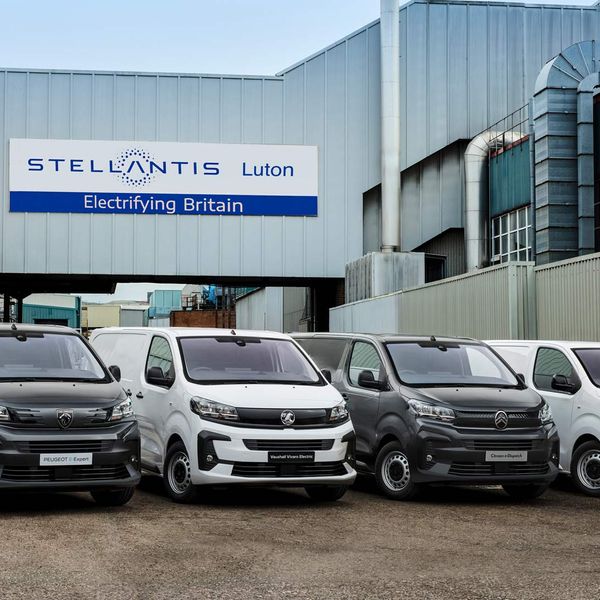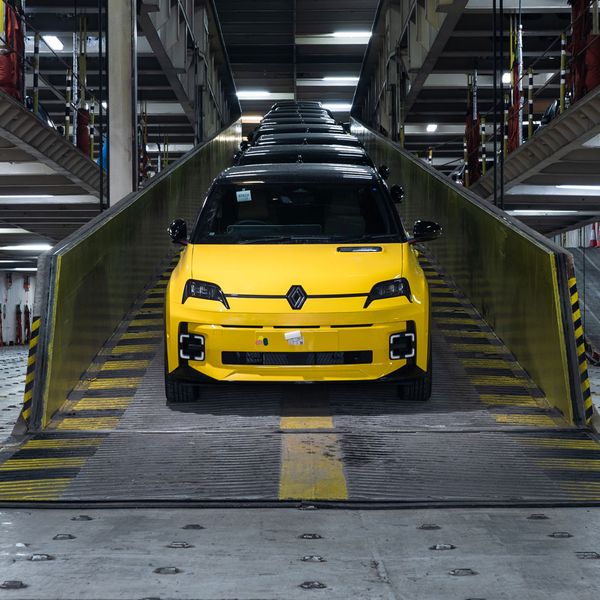While many vans do small daily mileages and could therefore easily be swapped for an electric, there are others which need to really go the distance. What if you suddenly get a job miles off your normal route? Or maybe you need to tow a trailer and think it’s going to kill the range?
Luckily the technology around electric vans is moving quickly and the ranges are growing fast. If you’re thinking about going electric but are worried about running out of charge, these are the top 15 longest van ranges currently on sale.
15. Mercedes E-Vito – 162 miles
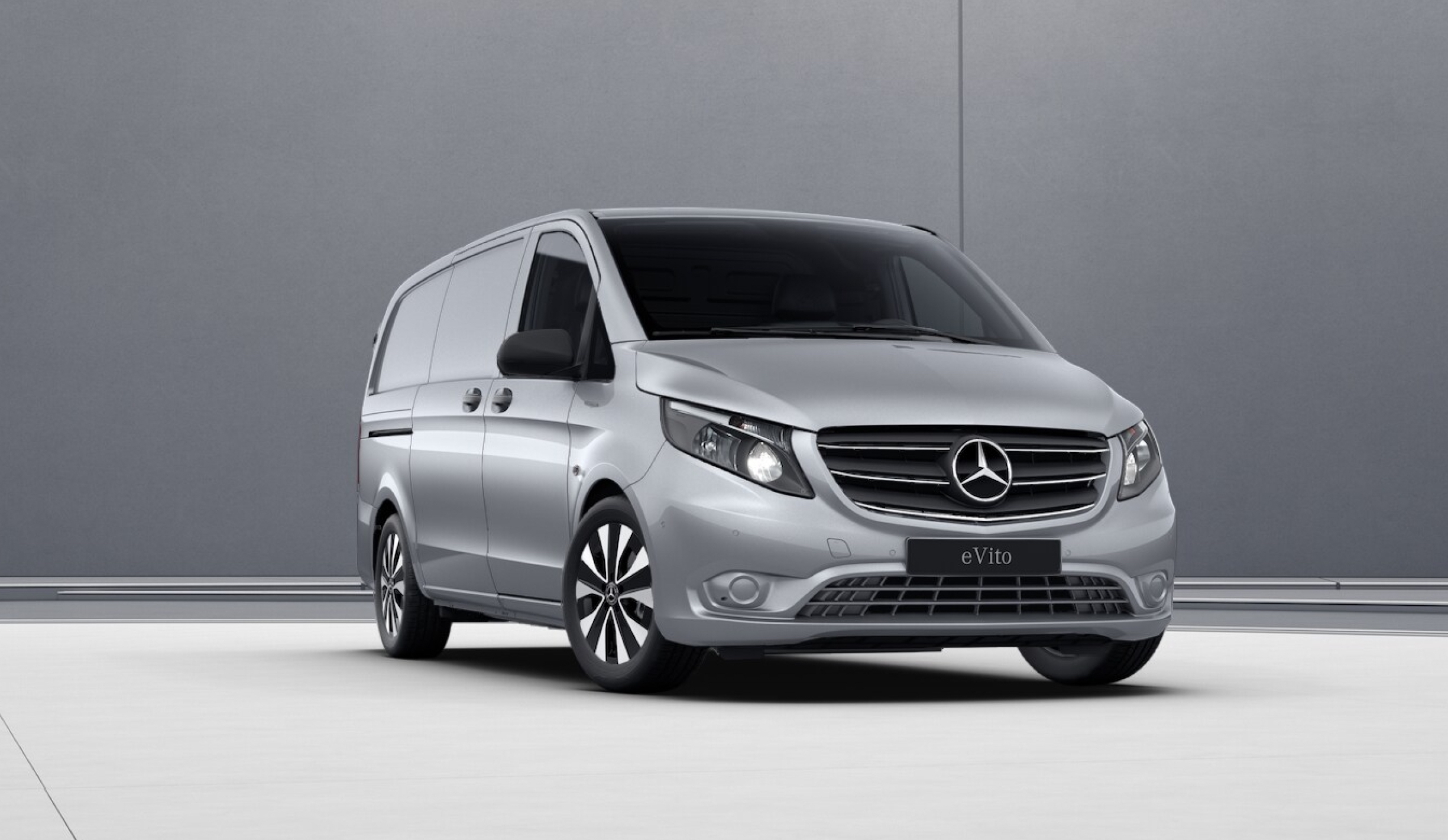
Mercedes’ alternative to the traditional Transit has been available as an electric van for a few years now, but it has been slowly evolved so it can now offer a 162-mile range according to the official figures, making it a feasible proposition for many businesses. If you need to carry people rather than packages, there is a nine-seat ‘Tourer’ version with an even longer range – 221 miles – or the posh EQV.
The van’s 66 kWh lithium-ion battery can be charged at 11kW at an AC charger or 80kW at a DC rapid point, meaning a 10-80% charge should take around 35 minutes and add approximately 100 miles to the range.
AC fast charging to 100% capacity takes six-and-a-half hours using an 11kW Wallbox Type 2 charger, and approximately 20 hours using a regular domestic power outlet.
There is some power saving tech borrowed from Merc’s car range too, including the “DAUTO” recuperation mode, which uses radar to determine whether the van should ‘glide’ like a bike freewheeling, or decelerate and recover energy into the battery using regeneration.
The eVito has a payload of up to 807 kg and a maximum load volume of 6.0 to 6.6m3 depending on the body length chosen. The battery is safely housed beneath the floor, so does not impinge on the available space.
14. B-On Pelkan - 173 miles
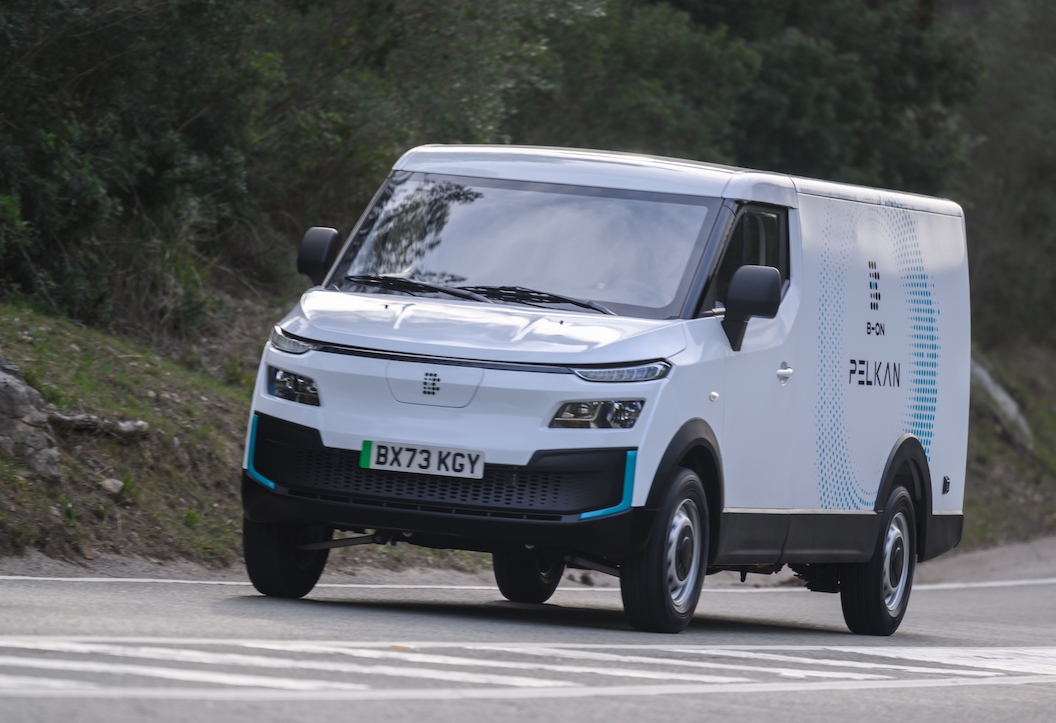
You may not have heard of B-On or its Pelkan van range, but it’s already securing orders among large fleets. Due to be launched next year, there are two battery sizes options available: the Pelkan 43 has a 43kwh battery, and a Pelkan 54 (predictably) has a 54kWh pack. B-On says this will result in claimed ranges of up to 140 and 173 miles respectively.
Charging speeds are said to be up to 100kW, and B-On quotes a time of 35 minutes for a charge from 30% to 80%.
Payload will depend on which model you go for, with the smaller battery offering 1,350kg while the bigger battery reduces overall payload to just 1,300kg. This is thanks to a lightweight aluminium body, which is currently only available in one size giving a load volume of 7.1m3.
The Pelkan lacks sophistication compared to other electric vans, but it’s cheap and big – which is all some businesses will want.
13. Renault Kangoo E-Tech (plus Mercedes Citan and Nissan Townstar) - 175-186 miles
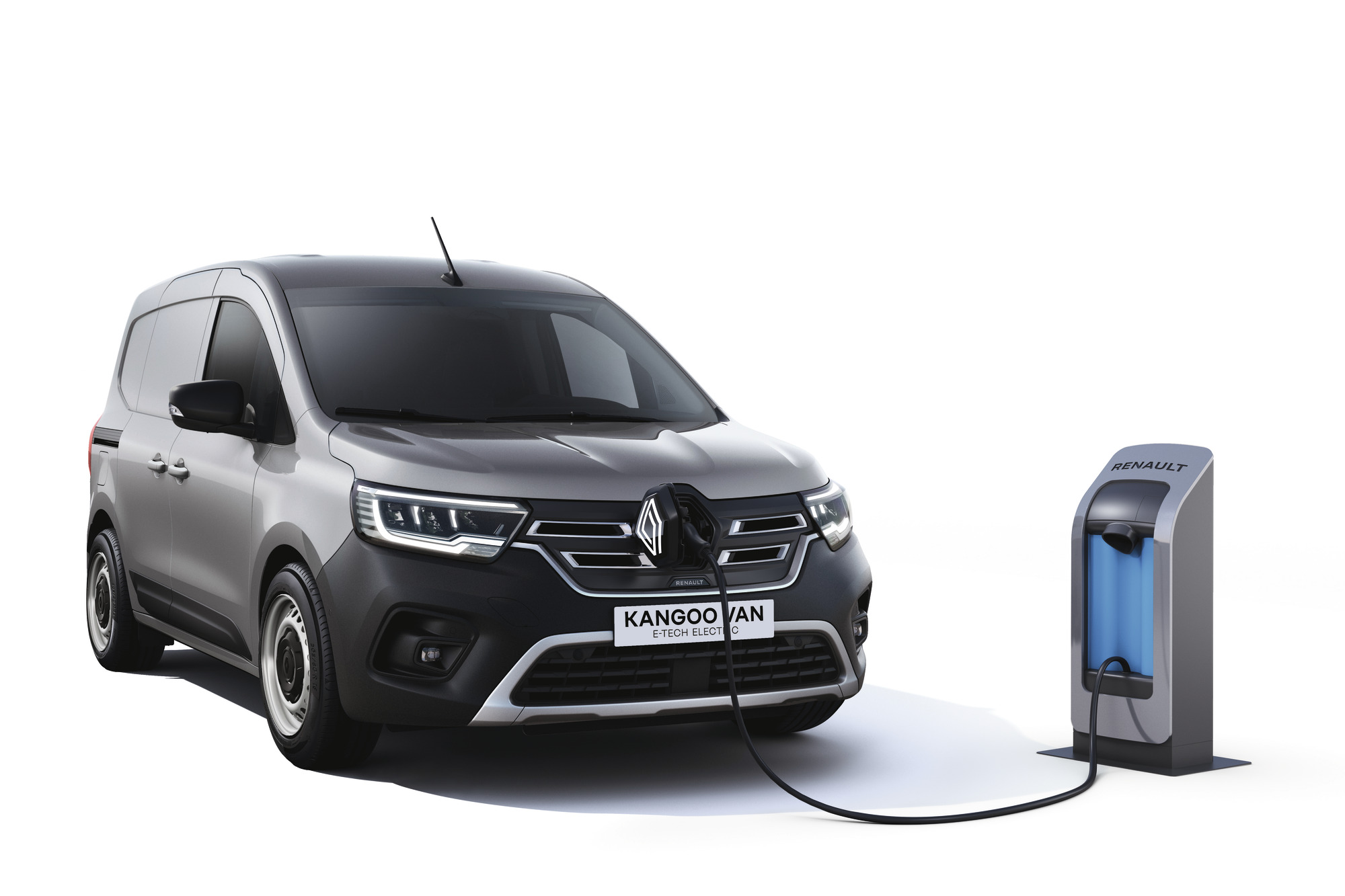
In terms of the basic architecture, the Renault Kangoo E-Tech is essentially the same van as the Mercedes eCitan and Nissan Townstar Electric, so you can choose your preferred brand and still get the same efficiency.
All are available in two body lengths – L1 and L2 – each with wide-opening side and rear doors and up to 4.2m3 of cargo volume. There are nice helpful touches too, such as the ‘Easy Inside Rack’ which provides a secure alternative to a roof rack for objects such as pipes up to 2.5m in length.
Choose the L1 and you’ll be allowed up to 609kg of payload, and 1,500kg of towing capacity too. Peculiarly, it’s the bigger L2 that has the higher GVW thanks to a heavier-duty rear axle, so it’ll take 764kg compared with the L1’s 609kg. The L2 is also offered as a crew cab, though this is quite pricey.
If you’re not towing, the Kangoo E-Tech delivers up to 186 miles of driving range from a 45 kWh battery located under the load floor where it has no impact on the cargo area.
It can be recharged from 20-80% by a typical 7.4 kW wall box in just over four hours, while rapid DC charging at up to 80 kW can deliver an 10-80% charge in around 40 minutes. Unusually, the Kangoo and its relations have the option to be charged at up to 22kW from a commercial three-phase AC power supply, meaning they can go from 10-80% in around an hour and 20 minutes.
12. Renault Trafic E-Tech – 183 miles
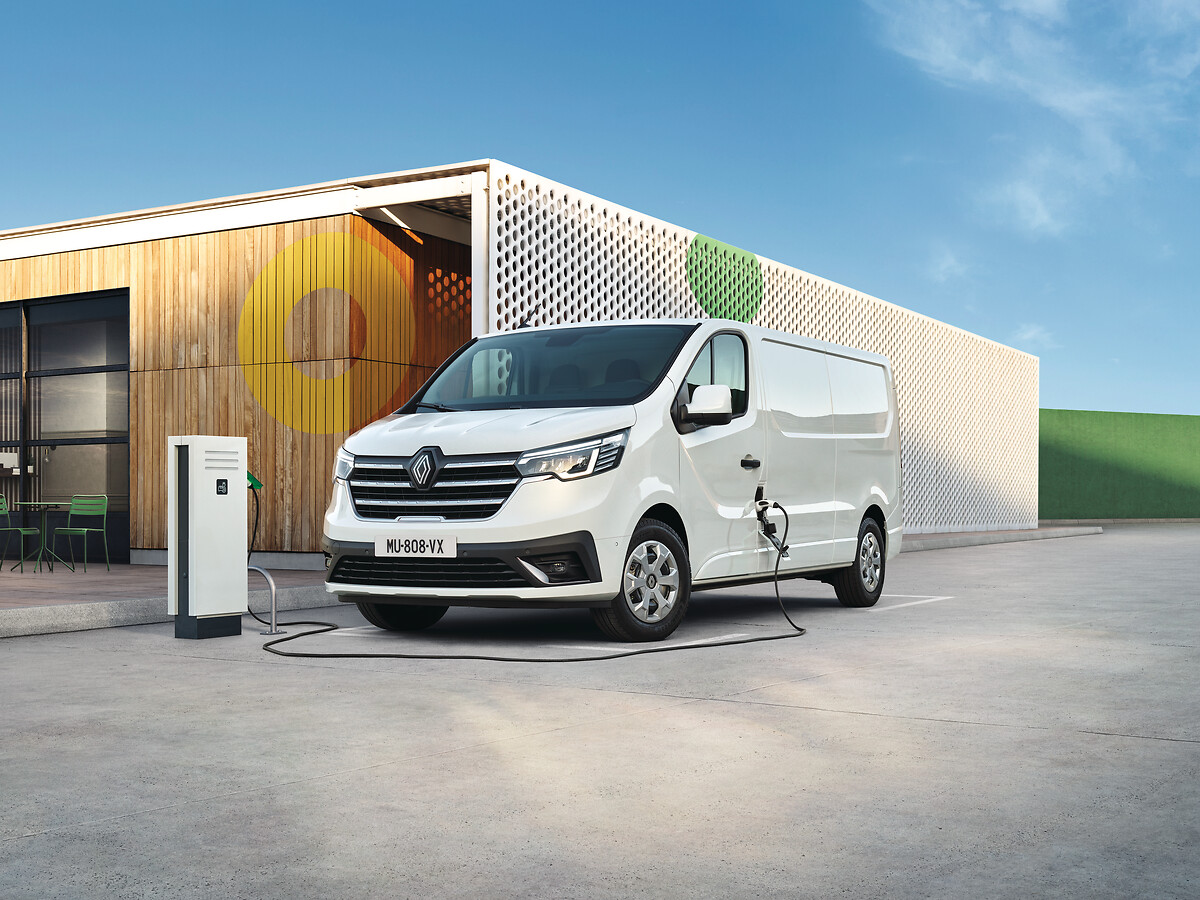
Although 183 miles is not a class-leading range figure, the Trafic E-Tech manages to squeeze that out of a comparatively small 52kWh battery. That means more space and payload for carrying things.
It's also available with only one trim level, battery and motor, it does have two length options and a high roof model, which is currently unusual in the UK market. If you need to stand up in a medium size van you’ll either need to be short or choose a Trafic.
That practical nature continues into the cabin, too, with up to 88 litres of storage space on offer: 19.7 litres in the console, 14.6 litres in the doors, and 54 litres in the bench.
The small battery helps with recharging times, especially since the rapid DC charging is limited to a maximum if 50kW. That means a 10-80% top up will take around an hour. AC charging is only at 7kW too, so there’s little advantage in plugging into to a three-phase power supply.
11. Maxus eDeliver 7 - 195 miles
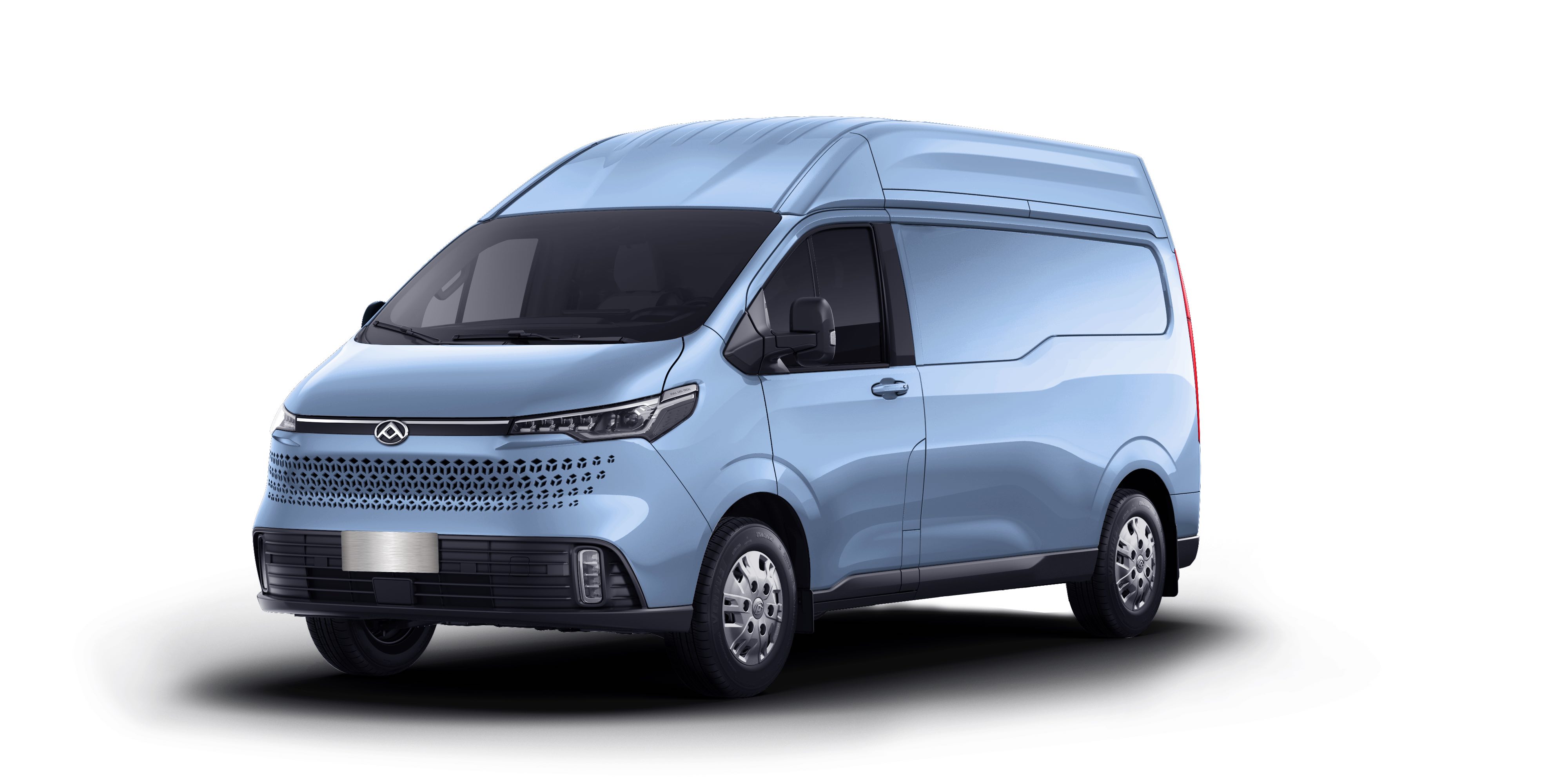
Maxus’ medium size offering is aimed squarely at the biggest selling section of the van market, with rivals including the Transit Custom. It has plenty to offer too, including the keen pricing and long warranty you’d expect from Maxus.
The company’s website is short on details, and I’d argue a little misleading too, claiming the maximum range is 230 miles. This is the urban range, which might be realistic if you are doing deliveries in a city but isn’t the benchmark used by everyone else. So the 195 mile figure is the range we’ll be using.
This is the figure from the largest battery – 88 rather than 87kWh – and the smallest body option. There are two lengths and two height options and payloads of up to 1,135kg.
Additionally, it offers a trailer capacity of 1,500kg. The single motor option is unusually powerful too, with 201bhp.
The styling inside and out looks modern too, and there is really space for three across the front of the eDeliver 7.
10. Ford E-Transit: 196 miles
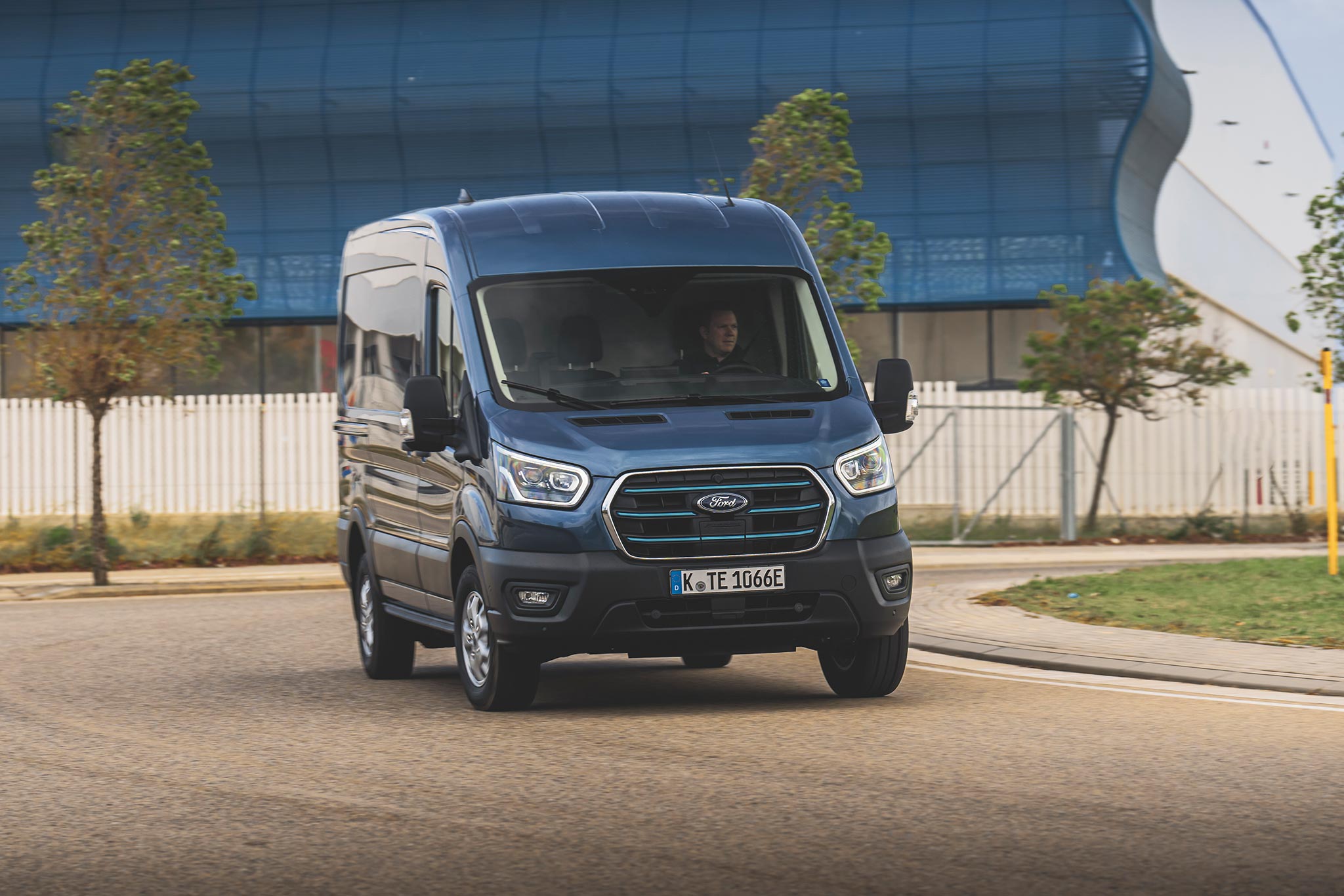
The Ford E-Transit has all the practicality you’d expect from Britain’s best seller. You can have it in three lengths and two heights, including a bare chassis for specialist bodies, a double-cab set up for up to seven people, and various other configurations.
In the regular panel van you can have sliding doors both sides, and rear doors that open properly wide to reveal between 9.5 and 15 cubic metres of loadspace depending on the wheelbase and roof height. Payload is up to 1,758kg,
The E-Transit comes with one battery option - a 68kWh lithium-ion unit. You get 11.3 kW AC charging as standard, allowing a charge in just over eight hours on this commercial-spec three phase power. There's DC rapid charging of 115kW via the nose-mounted charging point - which should be good for a 10 to 80% charge in around 35 minutes.
There are two motor options: one with 181bhp and 317lb ft of torque, and another one with 265bhp and the same torque figure. The 265bhp seems excessive unless you carry heavy loads or need to make use of the Transits (slightly weedy) 750kg towing capacity.
Talking of power, the Transit has a feature called ‘Pro Power Onboard’ which is usually known as a vehicle-to-load system. These plugs in the back can provide up to 2.3kW of power for anything from a laptop to a drill. Handy if you’re a handyman, possibly.
9. Maxus eDeliver 5 - 208 miles
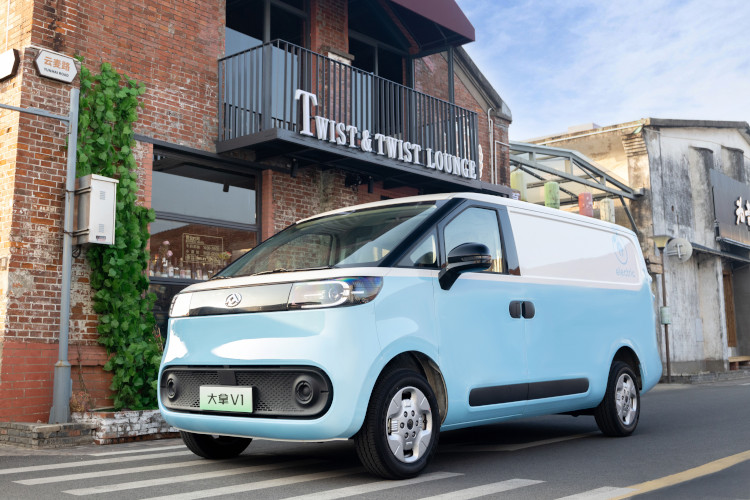
Maxus’ cheeky advertising says “The Buzz Stops Here!”, suggesting the eDeliver 5 is a suitable substitute for Volkswagen’s sought-after electric van. They do have some things in common beyond the two-tone paint job too, including a similar size which falls halfway between the smaller Berlingo-style vans and a Transit Custom.
In some ways it beats the VW too, including having more load space and a much lower price. It’s 4,800mm long with a maximum load length of 2,653mm and volumes of 6.6m3 and 7.6m3 depending on which height option you choose.
The extra height robs the range though. The eDeliver 5’s 161hp motor and a 64kWh battery gives it a 208-mile electric range, which falls to 190 miles if you go for the high-roof.
8. E-Transit Custom - 209 miles
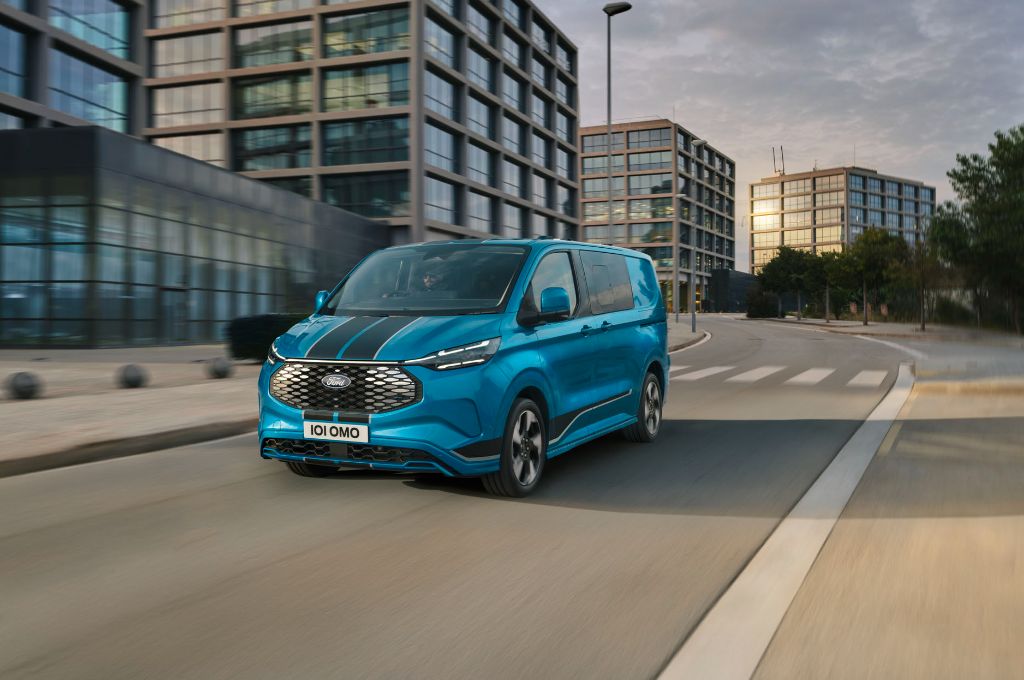
The Custom is the electrified version of the UK’s best-selling vehicle outright, and a major milestone for Ford in its move to being predominantly a commercial vehicle brand.
There’s a choice of three power outputs – 135 or 217PS in the two ‘normal’ trims and 285PS in the Ford e-Transit MS-RT, which is the rally-inspired performance option.
All versions come with a 64kWh battery pack, offering a maximum of 209 miles range on the WLTP cycle.
Total payload is 239kg less than diesel models at 1088kg and there is a choice of body options - panel van, double-cab with six passenger seats, a Kombi with up to eight seats or a Multicab with a two-seat second row and staggered bulkhead, allowing longer loads on one side.
There are also two wheelbases: standard L1 or extended L2, with one roof height – H1, which at under two metres in height will fit in a standard domestic garage.
Charging times using a 7.4kW wall box charger are just under eight hours, while 125kW rapid charging will get you from 10-80% charge in about 40 minutes.
7. Vauxhall Combo-E, Citroen E-Berlingo, Peugeot E-Partner & Toyota Proace City Electric - 213 miles
You can choose your little electric van with whichever badge you like on the front and they are essentially the same. For simplicity we will reference the Vauxhall Combo Electric, which can travel up to 213 miles on a charge of its new 52kWh battery. That’s the new power pack used in a load of Stellantis cars and it means an extra 38 miles compared to its predecessor.
It's also powered by the same 134 bhp electric motor as cars like the Corsa, which gives reasonable performance. It can be recharged from 0-80% in 30 minutes at a 100kW public charging station, which is unusually high for a van in this class.
With up to 4.4 cubic metres of storage space (the same as the diesel version), class-leading payload of up to 781kg and 750kg towing capacity, the Combo and its brethren make electric vans a sensible choice for many businesses.
6. Vauxhall Vivaro-E, Peugeot E-Expert & Citroen E-Dispatch - 217 miles
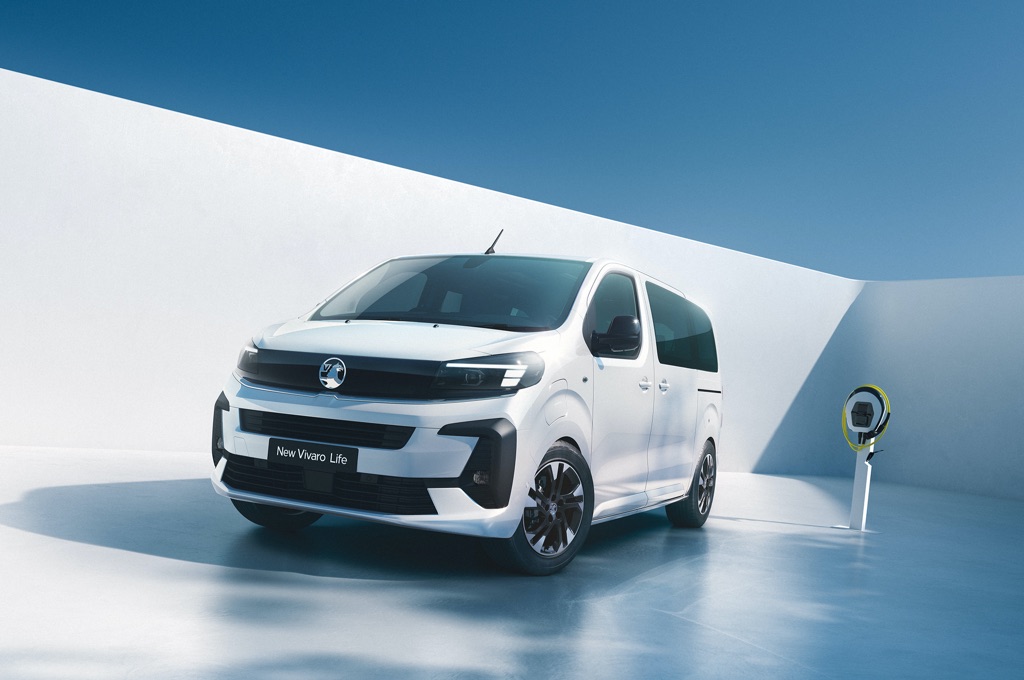.jpg)
The latest 2024 version of the Vivaro Electric (and the equivalents from Peugeot, Citroen and Toyota) has had a complete overhaul of the electric driveline and new composition for the battery, and is now able to squeeze a few more miles out of the same battery sizes - 50kWh and 75kWh.
The 75kWh (usable) battery is now capable of 217 miles rather than 205 miles, while the smaller pack has a claimed range of 139 miles and will easily cover more than 100 miles.
For the large battery, that’s almost identical to the E-Transit Custom which has a 77kWh battery and claimed range of 209 miles. Charging for the battery can be done using the standard 7.4kW onboard charger (an 11kW charger is optional), while a 5-80% charge takes just 45 minutes at a 100kW public charger, which is slightly slower than the Custom which charges at a speed of 125kW.
The Vivaro is only available in two body lengths and one roof height, but there is a crew van and platform-chassis option. Standard vans have a total length of 4959mm allowing L1 models to transport 2512mm for the L1 and 2862mm for the longer length L2. Its load volume is the same as the diesel with up to 6.6m3 and there’s also a payload of up to 1,000kg.
It's cheaper than before too, which is a bonus.
5. Maxus eDeliver 9 - 219 miles
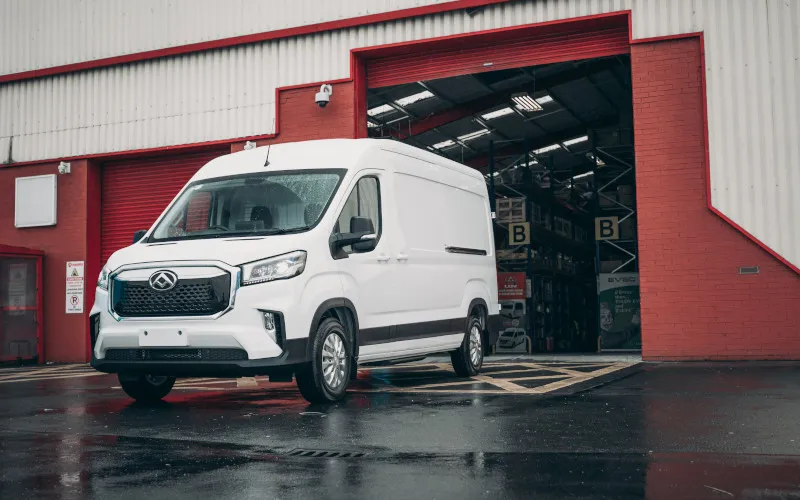
Maxus is owned by the same parent company as MG, so much of the battery technology comes from the same engineers. Like the cars, that means the electric vans are really competitive and designed from the ground-up by SAIC with electrification front of mind.
The Maxus eDeliver 9 is its largest panel van, sold as a rival to the likes of the Peugeot e-Boxer, larger e-Transit and Vauxhall Movano Electric.
There’s a choice of three battery sizes - 51.5kWh (with 112 miles range WLTP), 72kWh (146 miles) and 88.55kWh (219 miles). All are equipped with a punchy 201PS motor. Using DC fast charging, a charge from 20-80% will take 45 mins for all three batteries.
It’s available in two different body lengths: 'MH' medium and 'LH' long, with total cargo volume ranging from 9.7 to 11.0 cubic metres depending on body style. Payloads are from 1,040kg to 1,200kg depending on the body size and battery.
The Maxus’ real attraction is likely to be the price. It’s around 15% cheaper than the Stellantis vans, 20% cheaper than a Ford e-Transit and a whopping 40% beneath a Mercedes-Benz e-Sprinter with comparative equipment.
4. Volkswagen Buzz Cargo – 256 miles
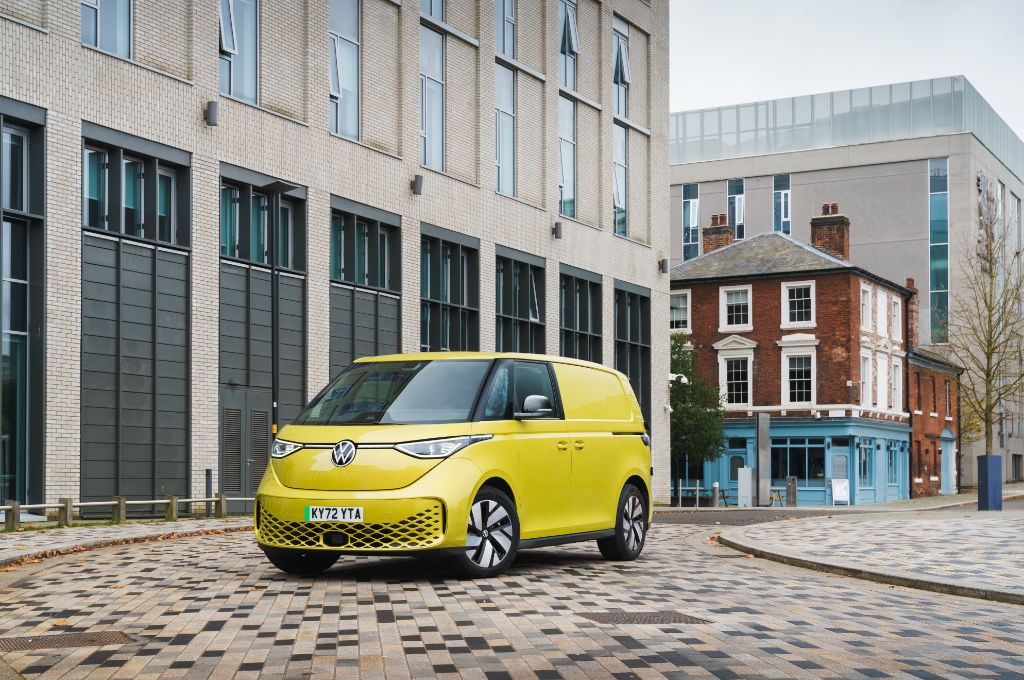
The ID. Buzz Cargo might look like a novelty, but it actually works well as a van too. It is Volkswagen's first purpose-built, all-electric van and uses the same basic hardware as many of VW’s electric cars and the Buzz passenger car too. This means it is unusually nice to drive and solid-feeling.
Without seats used in the Buzz, the Cargo has a load capacity of 3.9 m3 and provides enough space for two Euro pallets. That’s less than smaller, cheaper vans such as the Vauxhall Combo, but is enough for many businesses.
The maximum payload of the Commerce is 607 kg while the higher spec Commerce Plus has a payload rating of 592 kg – both decent figures that are on a par with other electric vans.
The Cargo comes with a loading length of 2,208 mm when equipped with a tailgate and 2,232 mm when specified with wing doors.
The single 77kWh battery pack features a 201bhp motor that drives the back wheels, giving an official range figure of 256 miles. More interesting is the recharge speed of 170kW on a suitable rapid charger. That means a charge from 10-80% will take around 30 minutes.
3. Vauxhall Movano Electric- 261 miles
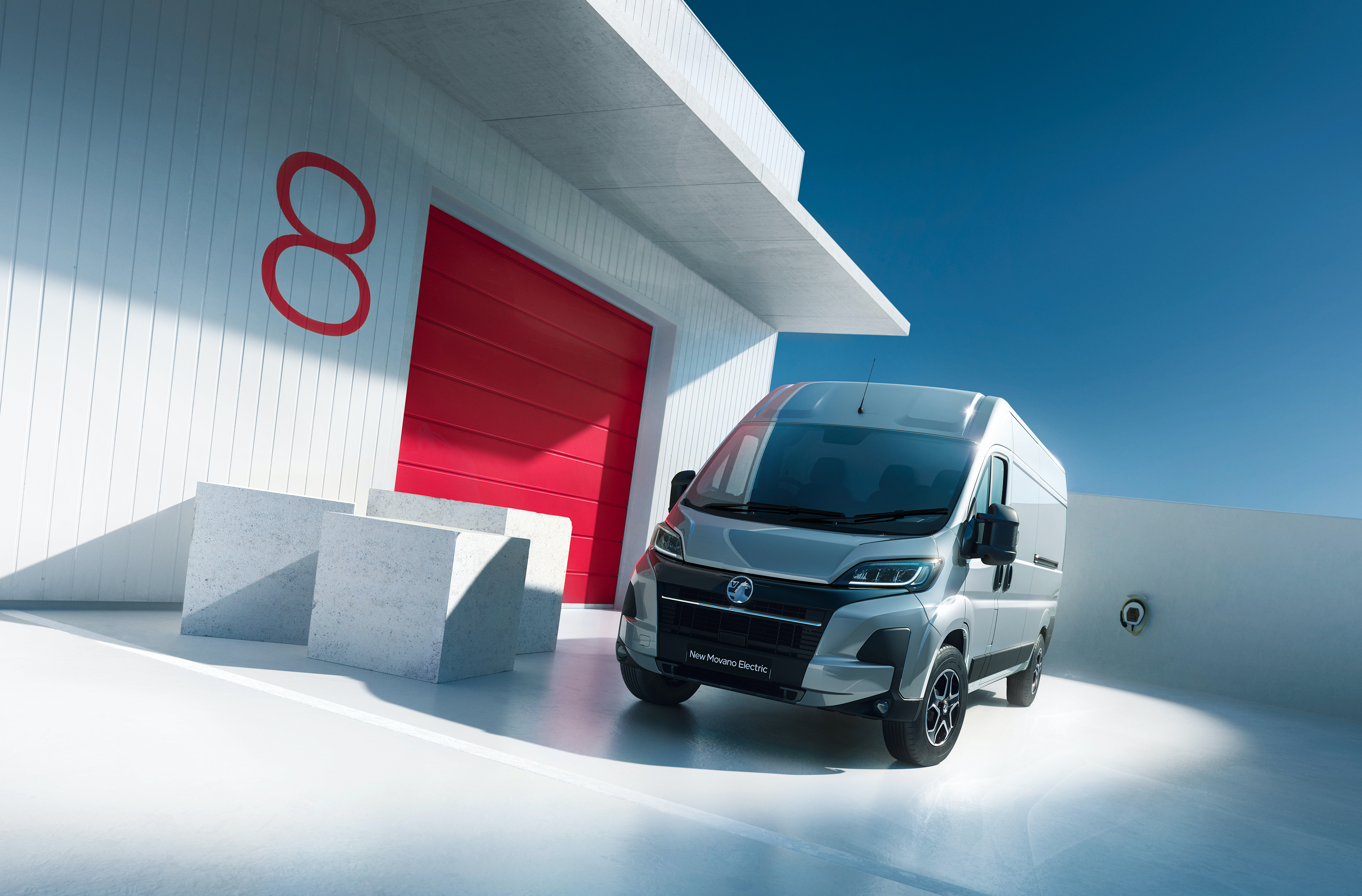
This is another van which shares the love between several brands, so you can choose the Movano Electric or a Citroen e-Relay, Fiat e-Ducato, Toyota Proace Max or Peugeot eBoxer and get basically the same machine. Each have a maximum of 17m3 of cargo volume and a payload of between 635kg and 1,385kg, depending on which of the many height, length and layout options you choose.
The latest model has a new 110 kWh battery, meaning the Movano Electric can cover up to 261 miles without a charging stop. The 270hp engine with 400 Newton metres of torque means it doesn’t feel underpowered even with a load on board.
It’s equipped as standard with a three-phase 11 kW onboard charger for AC charging and can accept up to 150 kW DC. At a public fast charging station, it takes 55 minutes to get to 80 percent of the battery capacity.
The most interesting number with the latest Movano is a massive price cut though – it’s £12,350 cheaper than the old model.
2. Mercedes eSprinter – 277 miles
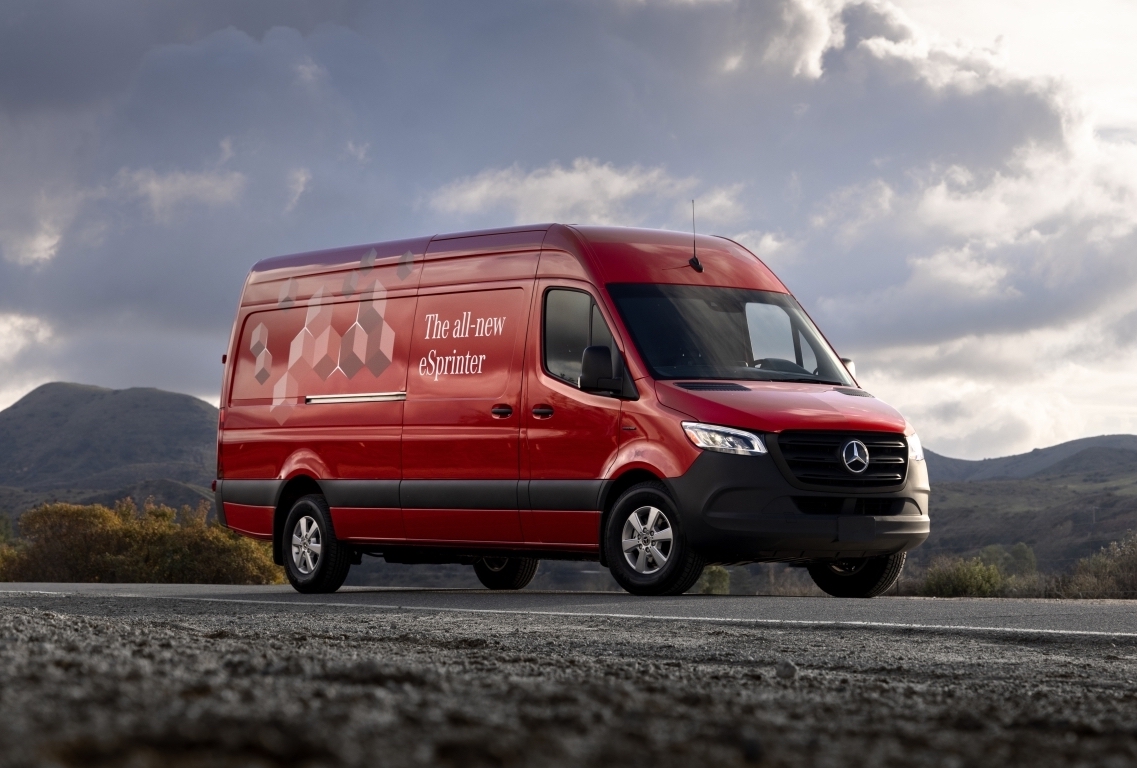
The electric version of the Sprinter is a serious proposition at last. Equipped with the larges 113 kWh battery, the electric range for the eSprinter, is a whopping 277 miles - more than double the previous model.
There are also two body lengths on offer, L2 or the extra-long L3, and a smaller 81kWh battery too if you don’t need quite as much range and want a bit more payload. For the first time, there is also a choice of two motors, with either 100 or 150 kW peak output. The more powerful version has a towing capacity of up to 1,500kg and the biggest variant has a massive 14m3 load space. Payloads are between 496kg and 1,272kg.
The on-board charger can be charged with DC at up to 115 kW at a fast-charging station, meaning the battery with a usable capacity of 113 kWh can be charged from 10-80% in around 42 minutes. The AC capacity is a disappointing 9.6kW though, which might slow down users with access to commercial three-phase supplies.
1. Renault Master and Nissan Interstar - 285 miles

The Master (and the Nissan which is the same van with different badges) has the longest range of any all-electric LCV currently on sale with a massive 285 mile range which rivals many cars.
That’s partly because it has a big battery - 87 kWh – but is also due to the efficiency of the overall package, with special attention given to aerodynamics and the motors.
The new Master is powered by a 105kW motor, delivering 300Nm of torque. This allows a payload of up to 1,625kg and massive 2,500kg towing capability.
A 130kW DC fast charge adds 142 miles of range in 30 minutes and a 22kW AC home charger tops up the battery from 10% to 100% in just under four hours.
Load volume ranges from 11 to 14.8 cubic metres, with a 40mm wider opening at the sliding side door and 100mm longer load compared to the last Master.
The cabin has plenty of load space too and is packed with tech. The big Renault is the electric van to beat at the moment.
How much range do I need in an electric van?
While the range of electric vans is improving all the time, it only makes sense to buy an EV which has just more than you need. It’s the same with the van’s overall size – if you buy one which is too big it will be more expensive to buy and run. For an electric van, a bigger battery will also reduce your payload.
The easiest way to tell how much range you need is to look at the mileage logs of your current van or fleet. If they are on regular routes you will know for sure but otherwise think about the longest journey they covered during a day. Also think if you’ll be able to charge fully overnight, or maybe during scheduled breaks.
The quoted ‘official’ range is generally a little on the optimistic side, but that’s not true if most of your driving is in town. Unlike diesel vans, this is where EVs thrive and you should be able to better the figure.
Also think about heating. Warming a big van takes a lot of energy, so consider a van with a bulkhead to keep the cabin nice and snug – you don’t need to warm the load. Unless it’s schoolchildren, perhaps.









